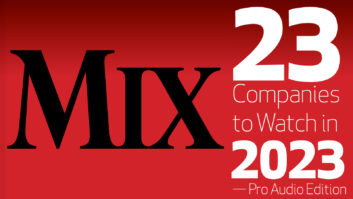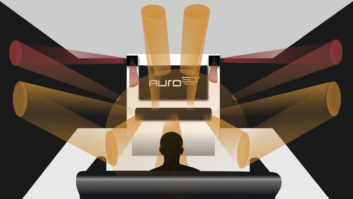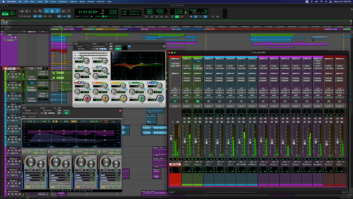Before the phrase “supply chain issue” entered the vernacular, there was the chip shortage. Remember that? It’s still a problem, and not just in pro audio. Add on the lockdowns, mandates, half-shifts, remote work, absence of trade shows, cutbacks in travel, the total disappearance of live sound and events for essentially a year…. It’s been a strange couple of years for pro audio manufacturers. And yet, sales, by and large, have shot through the roof. Nearly every company Mix talked to reported year-over-year growth (with a few exceptions in live sound), most attributing it to customers looking to upgrade their home systems and personal studios. Sweetwater had its best year ever in 2021. When forced to innovate, the pro audio community responded. With that in mind, we present, in alphabetical order, our choices for Companies to Watch in 2022.
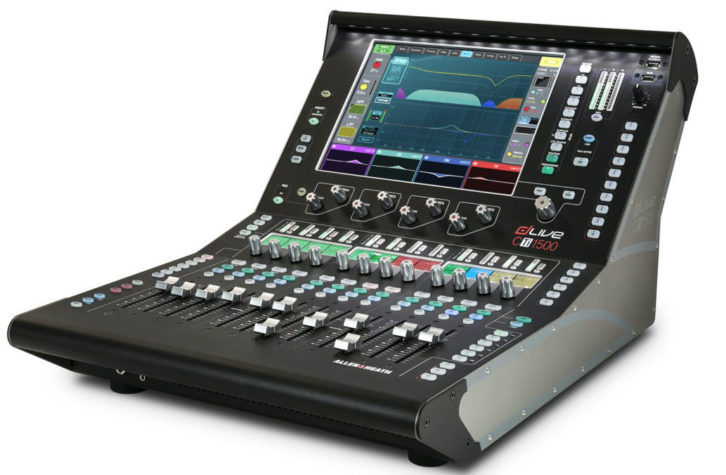 ALLEN & HEATH – Allen & Heath dLive live sound mixing consoles have long been a staple for houses of worship and small-to-mid-sized events, so it was only fitting that in May 2021, an engineer in Sydney, Australia, used a dLive S7000 control surface to remotely mix the annual Passionate Women’s Conference, a religious event more than 1,400 miles away in Wellington, New Zealand. Using a secure VPN network and Dante network cards to connect with a dLive DM64 MixRack at the conference, the event was mixed without a hitch—or an in-person engineer. Allen & Heath ’s offerings are increasingly being seen as tools to use when inspiration strikes, particularly in installation settings. The company released plenty of new products along those lines in 2021, like its latest console, the diminutive, 25-pound dLive CTi1500, an update of its compact dLive C1500 control surface. Installation options for Allen & Heath’s DT168 and DT164-W expanders increased with the introduction of the DT Preamp Control app, allowing them to be used within Dante audio networks. Elsewhere, a variety of new options, ranging from the Everything I/O range’s new Dante breakout boxes to touch-screen control panels to an echo-canceling module, were introduced, providing new tools that will help system designers and users alike get the job done in 2022.
ALLEN & HEATH – Allen & Heath dLive live sound mixing consoles have long been a staple for houses of worship and small-to-mid-sized events, so it was only fitting that in May 2021, an engineer in Sydney, Australia, used a dLive S7000 control surface to remotely mix the annual Passionate Women’s Conference, a religious event more than 1,400 miles away in Wellington, New Zealand. Using a secure VPN network and Dante network cards to connect with a dLive DM64 MixRack at the conference, the event was mixed without a hitch—or an in-person engineer. Allen & Heath ’s offerings are increasingly being seen as tools to use when inspiration strikes, particularly in installation settings. The company released plenty of new products along those lines in 2021, like its latest console, the diminutive, 25-pound dLive CTi1500, an update of its compact dLive C1500 control surface. Installation options for Allen & Heath’s DT168 and DT164-W expanders increased with the introduction of the DT Preamp Control app, allowing them to be used within Dante audio networks. Elsewhere, a variety of new options, ranging from the Everything I/O range’s new Dante breakout boxes to touch-screen control panels to an echo-canceling module, were introduced, providing new tools that will help system designers and users alike get the job done in 2022.
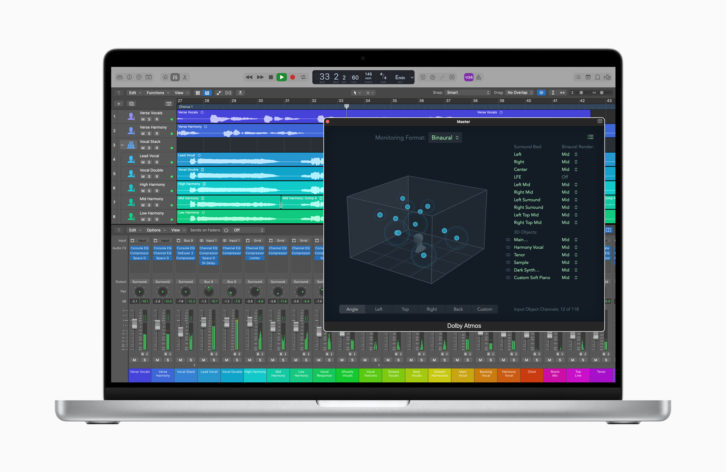 APPLE – We devoted a November cover story to Apple’s 2021 moves in the music industry, so there’s not much to add here. Quite simply, Logic Pro X 10.7, with integration of the Dolby Atmos toolset and a slew of embedded plug-ins for mixing immersive music, is the best $199 you can spend in pro audio. Apple’s influence extends much wider, however, and its simultaneous announcement in late September that it would deliver Dolby Atmos tracks through its Apple Music platform just might be remembered as the tipping point in the acceptance of immersive music by consumers.
APPLE – We devoted a November cover story to Apple’s 2021 moves in the music industry, so there’s not much to add here. Quite simply, Logic Pro X 10.7, with integration of the Dolby Atmos toolset and a slew of embedded plug-ins for mixing immersive music, is the best $199 you can spend in pro audio. Apple’s influence extends much wider, however, and its simultaneous announcement in late September that it would deliver Dolby Atmos tracks through its Apple Music platform just might be remembered as the tipping point in the acceptance of immersive music by consumers.
 AVID – A new and more powerful version of Pro Tools was released in June, followed in July by the announcement that AvidPlay would distribute tracks mixed in Dolby Atmos to Apple Music’s Spatial Audio service. Eucon was updated, Avid Venue S6L Live consoles can now share IO. But Avid is a company to watch because initiating its subscription model is now proving to be a smart move. In Q3 results, subscription revenue was $28.0 million, an increase of 56.4 percent year-over-year, and Subscription & Maintenance revenue was $58.7 million, an increase of 20.5 percent year-over-year. Avid didn’t launch the subscription model in pro audio, but the company has shown that it can work. Meanwhile, with Pro Tools continuing to dominate the DAW market, we’re betting that in 2022 we’ll see a few new tools and workflow enhancements for immersive music mixing.
AVID – A new and more powerful version of Pro Tools was released in June, followed in July by the announcement that AvidPlay would distribute tracks mixed in Dolby Atmos to Apple Music’s Spatial Audio service. Eucon was updated, Avid Venue S6L Live consoles can now share IO. But Avid is a company to watch because initiating its subscription model is now proving to be a smart move. In Q3 results, subscription revenue was $28.0 million, an increase of 56.4 percent year-over-year, and Subscription & Maintenance revenue was $58.7 million, an increase of 20.5 percent year-over-year. Avid didn’t launch the subscription model in pro audio, but the company has shown that it can work. Meanwhile, with Pro Tools continuing to dominate the DAW market, we’re betting that in 2022 we’ll see a few new tools and workflow enhancements for immersive music mixing.
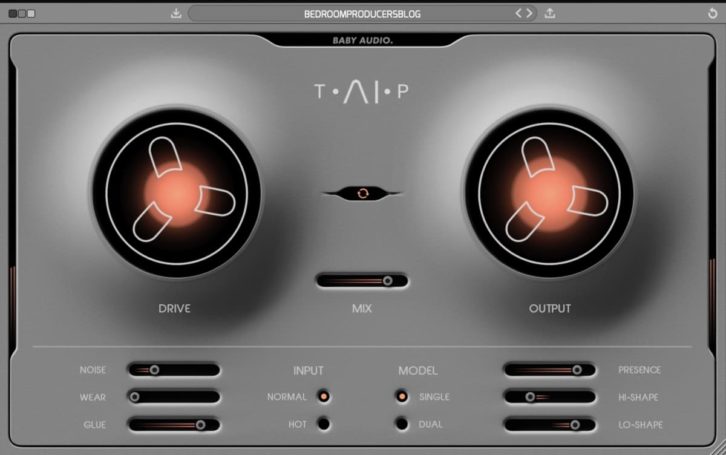 BABY AUDIO – Some plug-in makers offer products with user interfaces that mimic outboard hardware. Then there’s Baby Audio, a boutique developer founded three years ago in Los Angeles by Casper Bock, a former advertising exec. Bock had a passion for music production but found a lot of software to be complicated to operate, so he set out to develop simple yet creative plug-ins, with names like Smooth Operator and Comeback Kid, that offer minimal controls for functions such as Spank and Heat and unusual interfaces. These are not your father’s processors—and yet they are, re-creating classic ‘90s “New York” compression and the grit, grain and saturation of ‘80s lo-fi recordings. In exchange for your email address, you can even grab free plug-ins such as Magic Dice (random FX), Magic Switch (one-button chorus) and Baby Comeback (delay and ducker). Long-term, according to Bock, whose team of programmers includes an AI specialist, the company plans to bundle multiple effects into 10 to 15 products that can evolve as operating systems develop.
BABY AUDIO – Some plug-in makers offer products with user interfaces that mimic outboard hardware. Then there’s Baby Audio, a boutique developer founded three years ago in Los Angeles by Casper Bock, a former advertising exec. Bock had a passion for music production but found a lot of software to be complicated to operate, so he set out to develop simple yet creative plug-ins, with names like Smooth Operator and Comeback Kid, that offer minimal controls for functions such as Spank and Heat and unusual interfaces. These are not your father’s processors—and yet they are, re-creating classic ‘90s “New York” compression and the grit, grain and saturation of ‘80s lo-fi recordings. In exchange for your email address, you can even grab free plug-ins such as Magic Dice (random FX), Magic Switch (one-button chorus) and Baby Comeback (delay and ducker). Long-term, according to Bock, whose team of programmers includes an AI specialist, the company plans to bundle multiple effects into 10 to 15 products that can evolve as operating systems develop.
![]() DOLBY – When Dolby ads graced the back page of Mix throughout the 1980s and early ‘90s, it was all about noise reduction, with just an inkling of emerging formats. Now, with Atmos a mature immersive format, well-established in post-production, Dolby has become a major player in all types of audio distribution, everything from a new theater going up in Las Vegas for Dolby Atmos Live presentations to first steps in entering the podcast market. A couple of years ago, Dolby set its sights on the music industry, initially in partnership with UMG, WB Music, Capitol Studios, Amazon, TIDAL and PMC. In 2021, there was a huge boom in studios converting to 7.1.4, even before the announcement of Apple Spatial, where Apple Music would offer Dolby Atmos mixes. More to come in 2022, no doubt.
DOLBY – When Dolby ads graced the back page of Mix throughout the 1980s and early ‘90s, it was all about noise reduction, with just an inkling of emerging formats. Now, with Atmos a mature immersive format, well-established in post-production, Dolby has become a major player in all types of audio distribution, everything from a new theater going up in Las Vegas for Dolby Atmos Live presentations to first steps in entering the podcast market. A couple of years ago, Dolby set its sights on the music industry, initially in partnership with UMG, WB Music, Capitol Studios, Amazon, TIDAL and PMC. In 2021, there was a huge boom in studios converting to 7.1.4, even before the announcement of Apple Spatial, where Apple Music would offer Dolby Atmos mixes. More to come in 2022, no doubt.
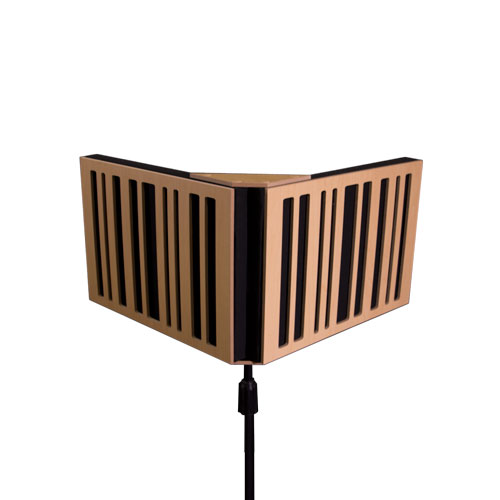 GIK ACOUSTICS – The audio industry was already trending back toward home-based production facilities when the coronavirus pandemic drove everyone to call their favorite retailer, grab a hammer and nails, and start building out a new space. GIK Acoustics, which reportedly treats over 5,000 rooms worldwide annually, was well-positioned to assist. The company started in Atlanta, Ga., in 2004 and added a European office in the north of England four years later. GIK’s catalog of innovative and environmentally safe products encompasses acoustic panels, bass traps and diffusors, as well as complete room kits, do-it-yourself packages and portable vocal shields and booths, some that double as gobos. There are free planning and advice options galore and custom finish options are truly limitless. Pro audio user endorsements also appear nearly limitless, with mastering engineers including Stephen Marsh and Bob Katz and manufacturers such as PMC and Rupert Neve Designs singing the company’s praises.
GIK ACOUSTICS – The audio industry was already trending back toward home-based production facilities when the coronavirus pandemic drove everyone to call their favorite retailer, grab a hammer and nails, and start building out a new space. GIK Acoustics, which reportedly treats over 5,000 rooms worldwide annually, was well-positioned to assist. The company started in Atlanta, Ga., in 2004 and added a European office in the north of England four years later. GIK’s catalog of innovative and environmentally safe products encompasses acoustic panels, bass traps and diffusors, as well as complete room kits, do-it-yourself packages and portable vocal shields and booths, some that double as gobos. There are free planning and advice options galore and custom finish options are truly limitless. Pro audio user endorsements also appear nearly limitless, with mastering engineers including Stephen Marsh and Bob Katz and manufacturers such as PMC and Rupert Neve Designs singing the company’s praises.
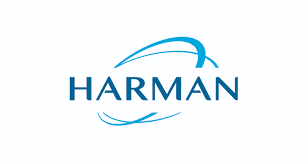 HARMAN – To be brutally honest, there has not been a huge amount of pro audio news out of the HARMAN companies following the late-2016 acquisition by Samsung. There has been a regular run of new product announcements, of course, including AKG’s ARA USB microphone and JBL’s EON 700 and EON One Mk2 portable P.A.s. The recent trend toward prosumer and consumer-based products is to be expected following the $8 billion purchase, as HARMAN has a much larger presence in car audio and infotainment spaces than in recording studios and live events. It’s a different world. But it wasn’t that long ago that JBL launched the VTX in live sound and the M2, 7 Series and 3 Series in recording and post-production. Now that the dust has settled on the Samsung purchase, we have a feeling that 2022 is going to be a good year for HARMAN in pro audio.
HARMAN – To be brutally honest, there has not been a huge amount of pro audio news out of the HARMAN companies following the late-2016 acquisition by Samsung. There has been a regular run of new product announcements, of course, including AKG’s ARA USB microphone and JBL’s EON 700 and EON One Mk2 portable P.A.s. The recent trend toward prosumer and consumer-based products is to be expected following the $8 billion purchase, as HARMAN has a much larger presence in car audio and infotainment spaces than in recording studios and live events. It’s a different world. But it wasn’t that long ago that JBL launched the VTX in live sound and the M2, 7 Series and 3 Series in recording and post-production. Now that the dust has settled on the Samsung purchase, we have a feeling that 2022 is going to be a good year for HARMAN in pro audio.
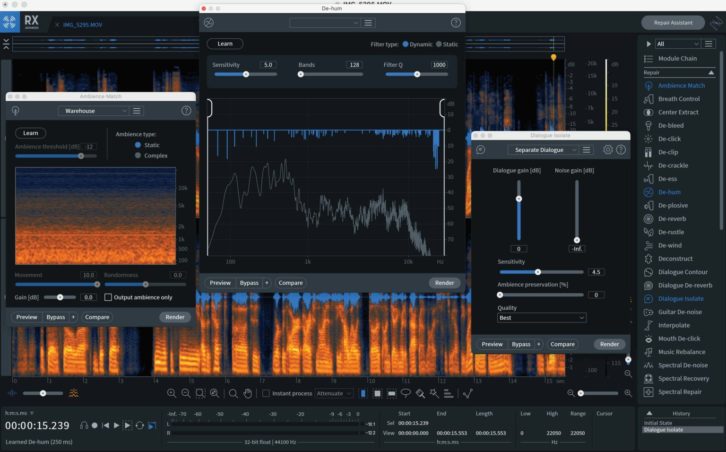 IZOTOPE – From Amazon’s Alexa to Tesla’s Autopilot, artificial intelligence has come a long way since its inception in 1956. Emmy Award-winning software company iZotope has been at the forefront of AI—machine learning, to be precise—in pro audio, developing a range of essential tools powered by assistive technology. The Boston metro area-based developer, which launched from a dorm room at MIT in 2001 with a single plug-in, offers a range of software products that cover a wide swath of applications. Perhaps best known is RX, popular for sound-for-picture post and audio restoration applications. Neutron’s AI analyzes a music mix and suggests levels, balances and other adjustments. Ozone’s AI-powered music mastering tools are similarly deep. The company’s website offers a clue to its future: “One area that could be exciting is if an algorithm could decide when a piece of audio is just too corrupted to repair without objectionable artifacts and in those cases actually synthesize replacement speech and/or music.”
IZOTOPE – From Amazon’s Alexa to Tesla’s Autopilot, artificial intelligence has come a long way since its inception in 1956. Emmy Award-winning software company iZotope has been at the forefront of AI—machine learning, to be precise—in pro audio, developing a range of essential tools powered by assistive technology. The Boston metro area-based developer, which launched from a dorm room at MIT in 2001 with a single plug-in, offers a range of software products that cover a wide swath of applications. Perhaps best known is RX, popular for sound-for-picture post and audio restoration applications. Neutron’s AI analyzes a music mix and suggests levels, balances and other adjustments. Ozone’s AI-powered music mastering tools are similarly deep. The company’s website offers a clue to its future: “One area that could be exciting is if an algorithm could decide when a piece of audio is just too corrupted to repair without objectionable artifacts and in those cases actually synthesize replacement speech and/or music.”
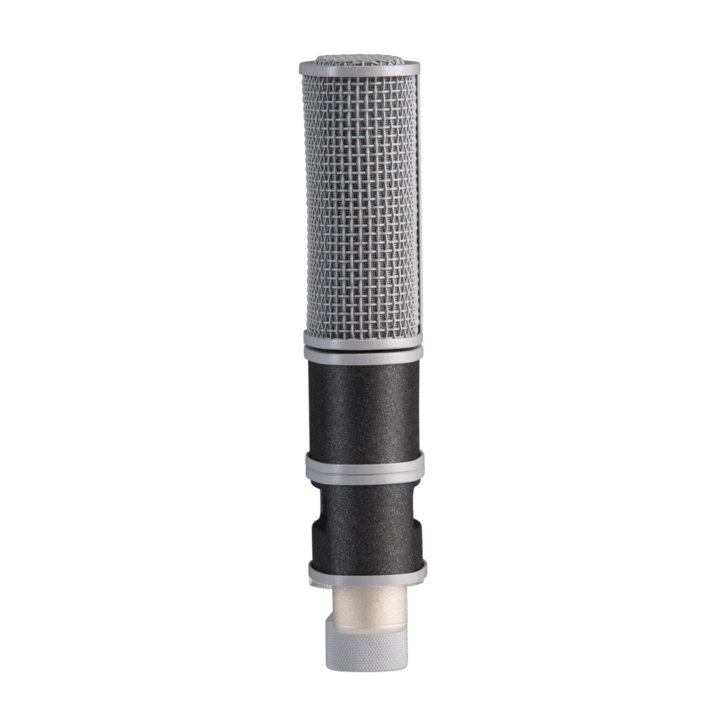 JZ MICROPHONES – Juris Zarins, a former jeweler, had spent decades repairing vintage mics and working on dozens of new designs for manufacturers, including Blue and Violet Designs, when he established his own handcrafted brand, JZ Microphones, in Latvia in 2007. The company marries innovative electronics and capsule designs with unique form factors to create a variety of reasonably priced condenser mics that have won JZ many fans in the recording community. The Black Hole series, the first to be produced, now includes pattern and pad options. The Vintage series re-creates a number of classics (model numbers such as Vintage 67, 47 and 11 offer clues to their inspiration). The 67-like Amethyst, a Violet holdover, continues to be a bestseller. The HH Series adds a low-cost, handheld dynamic alternative. All models feature JZ’s unique Golden Drop Capsule technology, a manufacturing process that allows for a “lighter therefore faster therefore clearer”–sounding diaphragm.
JZ MICROPHONES – Juris Zarins, a former jeweler, had spent decades repairing vintage mics and working on dozens of new designs for manufacturers, including Blue and Violet Designs, when he established his own handcrafted brand, JZ Microphones, in Latvia in 2007. The company marries innovative electronics and capsule designs with unique form factors to create a variety of reasonably priced condenser mics that have won JZ many fans in the recording community. The Black Hole series, the first to be produced, now includes pattern and pad options. The Vintage series re-creates a number of classics (model numbers such as Vintage 67, 47 and 11 offer clues to their inspiration). The 67-like Amethyst, a Violet holdover, continues to be a bestseller. The HH Series adds a low-cost, handheld dynamic alternative. All models feature JZ’s unique Golden Drop Capsule technology, a manufacturing process that allows for a “lighter therefore faster therefore clearer”–sounding diaphragm.
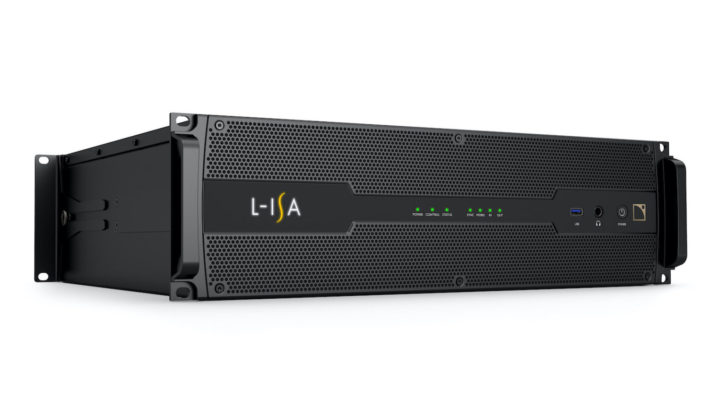 L-ACOUSTICS – For a year that saw live sound only start to make its comeback, L-Acoustics had a strong 2021. Last year saw the France-based company continue to make inroads with its L-ISA immersive audio product line, first shown in 2016. Aiming to ensure that sound designers, music producers and engineers could create with L-ISA, the company released L-ISA Studio Immersive Audio Software—essentially a virtual L-ISA Processor that could run on a desktop computer and be used with headphones. The L-ISA Processor II, introduced in the fall, radically updated the original to add far more outputs, virtual audio objects and newfound scalability. Meanwhile, the company didn’t ignore loudspeakers, introducing the SB10i, a scaled-down subwoofer intended for installations. L-Acoustics gear could be found in high-profile settings, such as the fall Genesis tour (see page 24), while live engineer Chris Rabold used subsidiary L-Acoustics Creations’ Contour XO In-Ear headphones for his reference mix while mixing and monitoring Lady Gaga’s performance at the President’s inauguration. With that much accomplished during a “slow year” for the industry, it’s fair to expect L-Acoustics will be highly visible in 2022.
L-ACOUSTICS – For a year that saw live sound only start to make its comeback, L-Acoustics had a strong 2021. Last year saw the France-based company continue to make inroads with its L-ISA immersive audio product line, first shown in 2016. Aiming to ensure that sound designers, music producers and engineers could create with L-ISA, the company released L-ISA Studio Immersive Audio Software—essentially a virtual L-ISA Processor that could run on a desktop computer and be used with headphones. The L-ISA Processor II, introduced in the fall, radically updated the original to add far more outputs, virtual audio objects and newfound scalability. Meanwhile, the company didn’t ignore loudspeakers, introducing the SB10i, a scaled-down subwoofer intended for installations. L-Acoustics gear could be found in high-profile settings, such as the fall Genesis tour (see page 24), while live engineer Chris Rabold used subsidiary L-Acoustics Creations’ Contour XO In-Ear headphones for his reference mix while mixing and monitoring Lady Gaga’s performance at the President’s inauguration. With that much accomplished during a “slow year” for the industry, it’s fair to expect L-Acoustics will be highly visible in 2022.
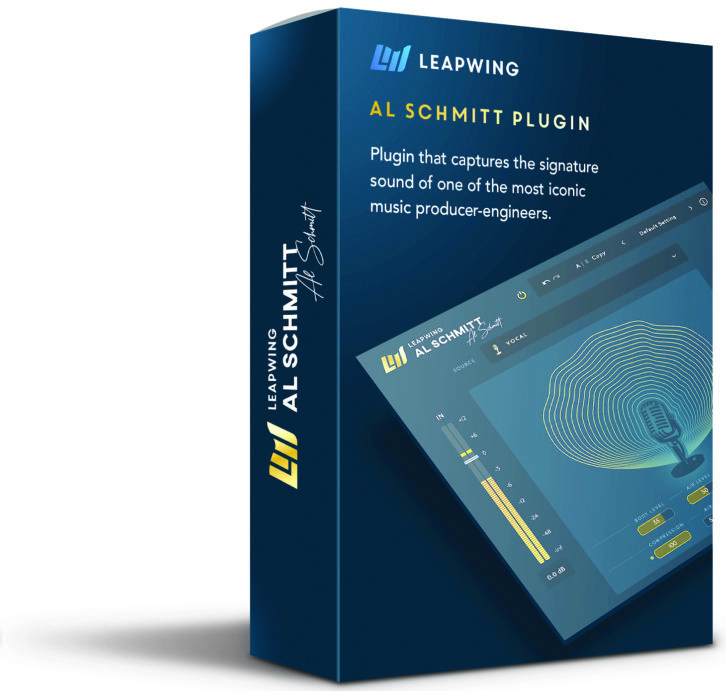 LEAPWING AUDIO – Leapwing Audio, co-founded by two music production professionals and an R&D engineer whose backgrounds collectively include working at Auro Technologies, Abbey Road Institute and Electric Lady Studios, has taken the road less traveled. While some developers focus on re-creating classic outboard devices, Leapwing makes plug-ins that do things that didn’t previously exist. Thanks to the AI—intelligent analysis and synthesis—under the hood, the intuitive and innovative plug-ins deliver quality results with little effort. The developer made a splash when it introduced its Al Schmitt signature plug-in earlier this year, capturing the signal flow and character of the late Grammy Award-winning engineer and producer’s approach to any source: vocal, piano, bass, brass and strings, as well as the mix bus output. Other Leapwing plug-ins offer enhancements to vocals (UltraVox), the stereo soundstage (StageOne, CenterOne) and dynamics (DynOne, RootOne).
LEAPWING AUDIO – Leapwing Audio, co-founded by two music production professionals and an R&D engineer whose backgrounds collectively include working at Auro Technologies, Abbey Road Institute and Electric Lady Studios, has taken the road less traveled. While some developers focus on re-creating classic outboard devices, Leapwing makes plug-ins that do things that didn’t previously exist. Thanks to the AI—intelligent analysis and synthesis—under the hood, the intuitive and innovative plug-ins deliver quality results with little effort. The developer made a splash when it introduced its Al Schmitt signature plug-in earlier this year, capturing the signal flow and character of the late Grammy Award-winning engineer and producer’s approach to any source: vocal, piano, bass, brass and strings, as well as the mix bus output. Other Leapwing plug-ins offer enhancements to vocals (UltraVox), the stereo soundstage (StageOne, CenterOne) and dynamics (DynOne, RootOne).
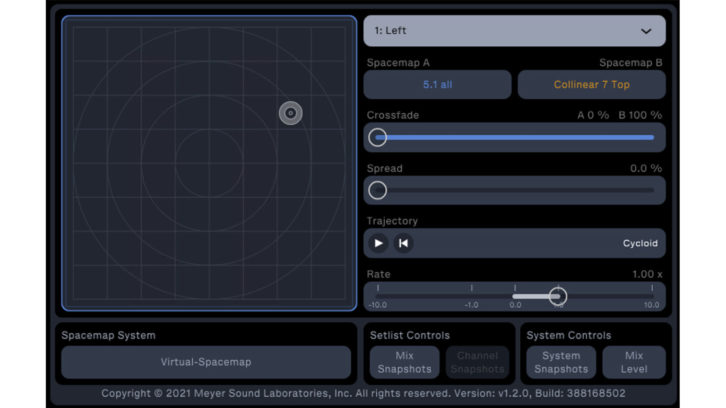 MEYER SOUND – In recent years, Meyer Sound has placed a growing emphasis on immersive audio, particularly through its continued development of Spacemap Go, the spatial sound design and live mixing tool that controls the company’s GALAXY Network Platform. While Spacemap Go has long offered iPad control, the technology got a major push forward in late 2021 when it became directly controllable on major live sound consoles from Avid and SSL. Meyer introduced a Spacemap Go AAX plug-in for Avid’s VENUE S6L live sound mixing platform in November, allowing users to access Spacemap Go functions from the control surface and further be able to integrate Spacemap Go snapshots into a master show file. Nearly simultaneously, SSL released its Live V5 firmware update, which added Spacemap Go functions to all its current SSL Live consoles. Meyer’s loudspeakers continue to be go-to tools for live sound, of course. Last January saw the introduction of the Leopard M80, an 80-degree, long-throw variant of the existing Leopard loudspeaker. As tours returned to the road in 2021, high-profile jaunts by Dead & Company and The Dave Matthews Band proudly carried Meyer rigs, while numerous Broadway shows including Moulin Rouge and Jagged Little Pill made the most of Meyer systems, as well.
MEYER SOUND – In recent years, Meyer Sound has placed a growing emphasis on immersive audio, particularly through its continued development of Spacemap Go, the spatial sound design and live mixing tool that controls the company’s GALAXY Network Platform. While Spacemap Go has long offered iPad control, the technology got a major push forward in late 2021 when it became directly controllable on major live sound consoles from Avid and SSL. Meyer introduced a Spacemap Go AAX plug-in for Avid’s VENUE S6L live sound mixing platform in November, allowing users to access Spacemap Go functions from the control surface and further be able to integrate Spacemap Go snapshots into a master show file. Nearly simultaneously, SSL released its Live V5 firmware update, which added Spacemap Go functions to all its current SSL Live consoles. Meyer’s loudspeakers continue to be go-to tools for live sound, of course. Last January saw the introduction of the Leopard M80, an 80-degree, long-throw variant of the existing Leopard loudspeaker. As tours returned to the road in 2021, high-profile jaunts by Dead & Company and The Dave Matthews Band proudly carried Meyer rigs, while numerous Broadway shows including Moulin Rouge and Jagged Little Pill made the most of Meyer systems, as well.
 MOTU – The new generation of audio professionals can be forgiven if they don’t know that MOTU stands for Mark of the Unicorn, or that the company introduced the first music program for the Macintosh in the 1980s, or that the company’s software, Digital Performer, is not just one of the few remaining DAWs from the early 1990s, it’s a powerhouse and had a powerful recent update in DP11. You see, MOTU began making audio interfaces, and they’ve become such mainstays in personal and professional studios, including the world’s first FireWire interface, the 828 in 2010, as well as the recent 2021 release of the UltraLite-Mk5 18×22 multichannel USB model, incorporating the latest ESS Sabre32 DAC technology, that the company’s roots are sometimes forgotten. MOTU is one of those companies that knows musicians, engineers and business, and it’s a company that knows where the market is heading. We expect big things this year.
MOTU – The new generation of audio professionals can be forgiven if they don’t know that MOTU stands for Mark of the Unicorn, or that the company introduced the first music program for the Macintosh in the 1980s, or that the company’s software, Digital Performer, is not just one of the few remaining DAWs from the early 1990s, it’s a powerhouse and had a powerful recent update in DP11. You see, MOTU began making audio interfaces, and they’ve become such mainstays in personal and professional studios, including the world’s first FireWire interface, the 828 in 2010, as well as the recent 2021 release of the UltraLite-Mk5 18×22 multichannel USB model, incorporating the latest ESS Sabre32 DAC technology, that the company’s roots are sometimes forgotten. MOTU is one of those companies that knows musicians, engineers and business, and it’s a company that knows where the market is heading. We expect big things this year.
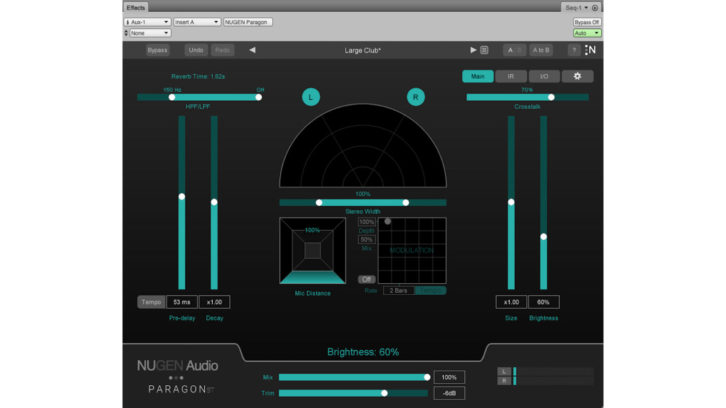 NUGEN AUDIO – UK-based developer NUGEN Audio’s origin story involves co-founders Dr. Paul Tapper and Jon Schorah combining their respective programming and audio production expertise to help a friend correct a stereo track during mastering. Nearly 18 years later, the company’s portfolio of award-winning software products might effectively be summed up by a handful of keywords: analysis, enhancement, correction and management. The broad range of tools, encompassing loudness metering and correction, mixing/mastering, surround audio and audio analysis, are in daily use by some of the top names in broadcast, post-production, and music production and mastering worldwide. The company’s Halo Upmix plug-in, powered by proprietary neural network technology, and long favored for stereo-to-surround upmixing, has been positioned for the new wave of immersive mix formats. NUGEN’s Paragon convolution reverb similarly operates in formats up to 7.1.2. Finally, the developer’s metering and loudness tools are helping to bring consistency across the many and various distribution platforms now in use.
NUGEN AUDIO – UK-based developer NUGEN Audio’s origin story involves co-founders Dr. Paul Tapper and Jon Schorah combining their respective programming and audio production expertise to help a friend correct a stereo track during mastering. Nearly 18 years later, the company’s portfolio of award-winning software products might effectively be summed up by a handful of keywords: analysis, enhancement, correction and management. The broad range of tools, encompassing loudness metering and correction, mixing/mastering, surround audio and audio analysis, are in daily use by some of the top names in broadcast, post-production, and music production and mastering worldwide. The company’s Halo Upmix plug-in, powered by proprietary neural network technology, and long favored for stereo-to-surround upmixing, has been positioned for the new wave of immersive mix formats. NUGEN’s Paragon convolution reverb similarly operates in formats up to 7.1.2. Finally, the developer’s metering and loudness tools are helping to bring consistency across the many and various distribution platforms now in use.
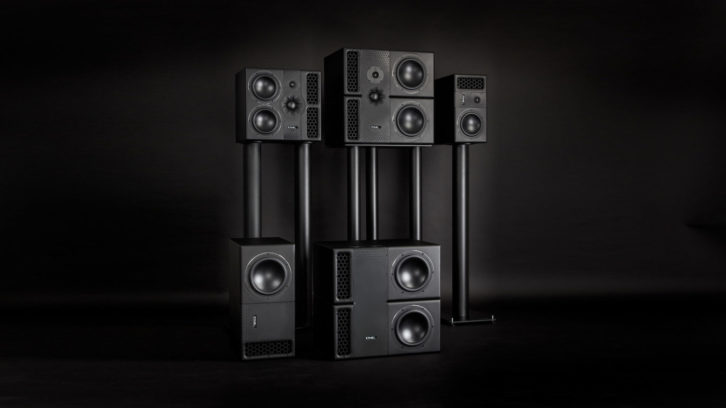 PMC – Few companies in pro audio have done more to educate engineers and promote Dolby Atmos Music for the recording industry than PMC, led in the U.S. by the tireless Maurice Patist. Partnerships with Capitol Studios, Dolby and Universal Music Group drew a lot of early attention but PMC has put its money where its mouth is, building a top-drawer mix studio in Los Angeles that has hosted hundreds of Atmos mix sessions, from Miles Davis to Carole King, and following that up in mid-2021 with an equally stellar Atmos mix studio in London. Plus, in September, already packed with a range of studio monitors that had proven a model for 7.1.4 system setups, the company came out with an entirely new nearfield and midfield line, the PMC6, PMC6-2 and PMC8-2, with accompanying subs. More to come in 2022.
PMC – Few companies in pro audio have done more to educate engineers and promote Dolby Atmos Music for the recording industry than PMC, led in the U.S. by the tireless Maurice Patist. Partnerships with Capitol Studios, Dolby and Universal Music Group drew a lot of early attention but PMC has put its money where its mouth is, building a top-drawer mix studio in Los Angeles that has hosted hundreds of Atmos mix sessions, from Miles Davis to Carole King, and following that up in mid-2021 with an equally stellar Atmos mix studio in London. Plus, in September, already packed with a range of studio monitors that had proven a model for 7.1.4 system setups, the company came out with an entirely new nearfield and midfield line, the PMC6, PMC6-2 and PMC8-2, with accompanying subs. More to come in 2022.
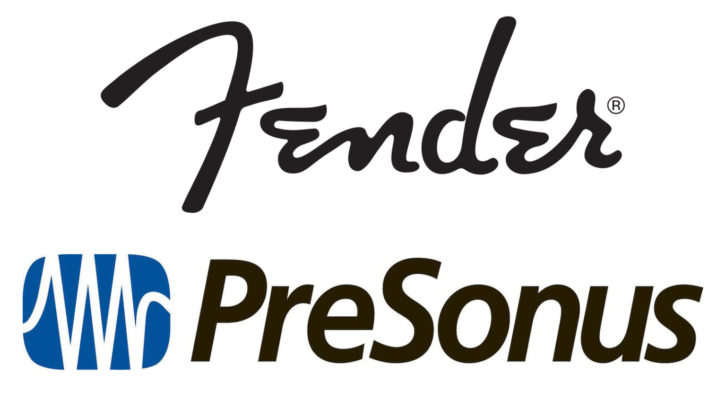 PRESONUS – There are companies to watch in 2022—and then there’s PreSonus, which will be under industry scrutiny as the venerable pro-audio manufacturer makes its first moves under new ownership. Guitar slinger Fender Musical Instruments Corporation purchased PreSonus in November 2021, leading Jim Odom, founder/CSO of PreSonus, to note at the time, “PreSonus feels it has found the right partner to support us as we continue our growth. We look forward to showing our current and future music community what this opportunity means for them.” The deal instantly gave Fender a strong foothold in pro audio, thanks to PreSonus’ track record in hardware—producing numerous mixers, controllers, interfaces, studio and live-sound loudspeakers, and mics among other products—and software, producing Studio One, sample libraries, virtual instruments and more. As both companies move forward under the new deal, it will be interesting to see how their cultures and technologies mix. Meanwhile, PreSonus spent 2021 unveiling numerous new products: MicroStation BT Bluetooth 5.0 stereo monitor controller; the Revelator io24 USB-C audio interface; and the second-generation R65 V2 and R80 V2 active AMT studio monitors.
PRESONUS – There are companies to watch in 2022—and then there’s PreSonus, which will be under industry scrutiny as the venerable pro-audio manufacturer makes its first moves under new ownership. Guitar slinger Fender Musical Instruments Corporation purchased PreSonus in November 2021, leading Jim Odom, founder/CSO of PreSonus, to note at the time, “PreSonus feels it has found the right partner to support us as we continue our growth. We look forward to showing our current and future music community what this opportunity means for them.” The deal instantly gave Fender a strong foothold in pro audio, thanks to PreSonus’ track record in hardware—producing numerous mixers, controllers, interfaces, studio and live-sound loudspeakers, and mics among other products—and software, producing Studio One, sample libraries, virtual instruments and more. As both companies move forward under the new deal, it will be interesting to see how their cultures and technologies mix. Meanwhile, PreSonus spent 2021 unveiling numerous new products: MicroStation BT Bluetooth 5.0 stereo monitor controller; the Revelator io24 USB-C audio interface; and the second-generation R65 V2 and R80 V2 active AMT studio monitors.
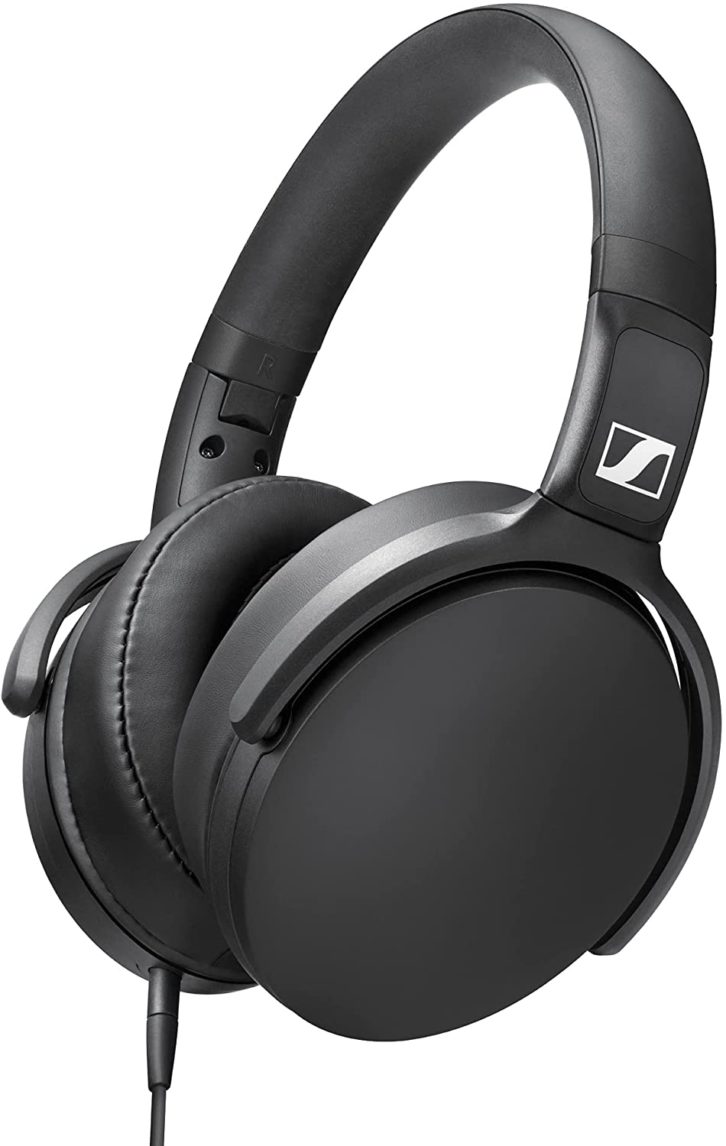 SENNHEISER – Sennheiser spent much of 2021 laying the groundwork for 2022 and beyond, as the German company released a slew of new products and, most notably, sold off its consumer electronics division last spring. Co- CEO Daniel Sennheiser explained to us last February, “Looking at [our] different business units in more detail, we realized we need different strategies to make them successful. We saw that the consumer part can be really driven to the full extent if we can find a partner and focus on the pro part.” Swiss hearing-care manufacturer Sonova ultimately purchased the division, kicking off a “permanent cooperation” between the companies that is expected to result in products like speech-enhanced hearables and more wireless and audiophile headphones in the coming years. In the meantime, Sennheiser released a passel of products, including the HM 200 head mic, placing the MKE 1 lavalier mic into a headset configuration; the XS Lav Mobile omni-directional clip-on mic; and, in December, HD 400 PRO studio reference headphones. Live sound was not forgotten, with its new Evolution Wireless Digital mic series, and keeping an eye toward the future, subsidiary Dear Reality introduced DearVR Mix, a new headphone mixing plug-in that lets users monitor through nine virtual environments.
SENNHEISER – Sennheiser spent much of 2021 laying the groundwork for 2022 and beyond, as the German company released a slew of new products and, most notably, sold off its consumer electronics division last spring. Co- CEO Daniel Sennheiser explained to us last February, “Looking at [our] different business units in more detail, we realized we need different strategies to make them successful. We saw that the consumer part can be really driven to the full extent if we can find a partner and focus on the pro part.” Swiss hearing-care manufacturer Sonova ultimately purchased the division, kicking off a “permanent cooperation” between the companies that is expected to result in products like speech-enhanced hearables and more wireless and audiophile headphones in the coming years. In the meantime, Sennheiser released a passel of products, including the HM 200 head mic, placing the MKE 1 lavalier mic into a headset configuration; the XS Lav Mobile omni-directional clip-on mic; and, in December, HD 400 PRO studio reference headphones. Live sound was not forgotten, with its new Evolution Wireless Digital mic series, and keeping an eye toward the future, subsidiary Dear Reality introduced DearVR Mix, a new headphone mixing plug-in that lets users monitor through nine virtual environments.
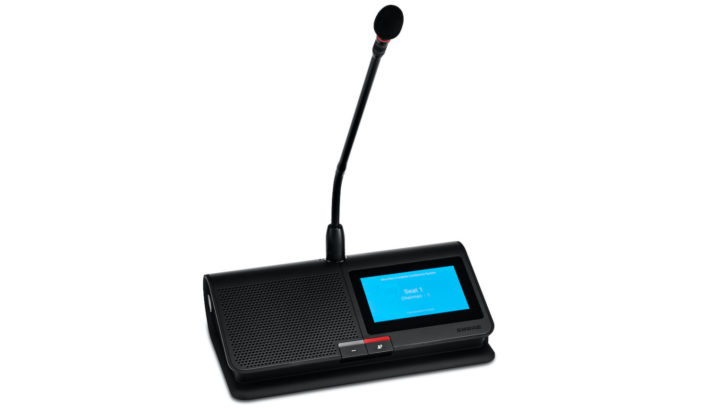 SHURE – In the pro audio world, years when Shure isn’t a company to watch are rare. Shure and its products have a well-earned omnipresence, as 2021 easily illustrated. On the live sound side, the SLX-D digital wireless system was updated, adding software networking capabilities, and the Axient Digital wireless series added the ADX5D dual-channel portable wireless receiver, intended for use in location sound applications, while the Microflex MX415DUAL cartridge gooseneck microphone also debuted, intended for use on live events and broadcast recording feeds. Shure made its presence known within the industry with more than products, however, as it joined WInnForum (Wireless Innovation Forum), which focuses on standards and spectrum utilization in wireless communications systems, and 5G-MAG (5G Media Action Group), an association bridging the media with Information and Communications Technology industries. A longtime member of the Professional Audio Manufacturers Alliance (PAMA), Shure worked with the group to create the Mark Brunner Professional Audio Scholarship in honor of the late Shure executive.
SHURE – In the pro audio world, years when Shure isn’t a company to watch are rare. Shure and its products have a well-earned omnipresence, as 2021 easily illustrated. On the live sound side, the SLX-D digital wireless system was updated, adding software networking capabilities, and the Axient Digital wireless series added the ADX5D dual-channel portable wireless receiver, intended for use in location sound applications, while the Microflex MX415DUAL cartridge gooseneck microphone also debuted, intended for use on live events and broadcast recording feeds. Shure made its presence known within the industry with more than products, however, as it joined WInnForum (Wireless Innovation Forum), which focuses on standards and spectrum utilization in wireless communications systems, and 5G-MAG (5G Media Action Group), an association bridging the media with Information and Communications Technology industries. A longtime member of the Professional Audio Manufacturers Alliance (PAMA), Shure worked with the group to create the Mark Brunner Professional Audio Scholarship in honor of the late Shure executive.
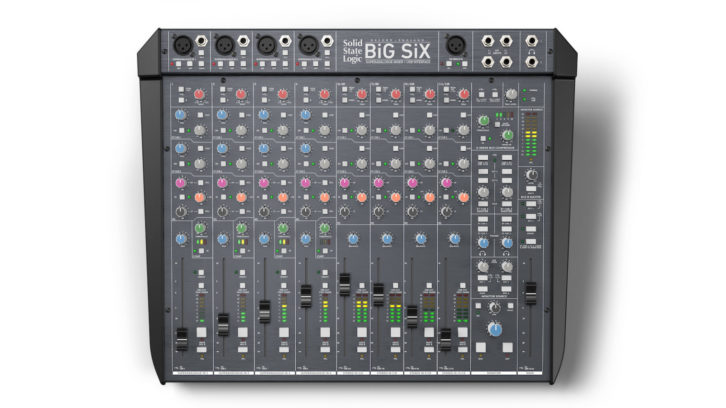 SOLID STATE LOGIC – It wasn’t that long ago that SSL was synonymous with large-format recording consoles, pictured on countless Mix covers, but that was pretty much it. Those foundational technologies have since morphed, evolved, been emulated, gotten smaller and grown into entirely new product lines and markets. SSL also worked well with others in 2021, collaborating with Focusrite for control of the RedNet MP8R mic pre directly from the System T console, and incorporating Meyer Sound Spacemap Go functions on SSL Live consoles. Speaking of Live, SSL introduced the all-new L450 and L650 consoles, with Live 5.0 updates that added scalable DSP “Plus Processing Packs’” Recording hardware introduced in 2021 included the UF8, DAW controller, expandable to 32 channels, followed by the UC1 to control SSL Native Channel Strip 2 and Bus Compressor 2 plug-ins. At the end of the year came Big SiX, a 16-channel console offering USB integration. Plus, the introduction in late September of the company’s new plug-in development program, featuring monthly releases of premium production tools. Can 2022 get any busier?
SOLID STATE LOGIC – It wasn’t that long ago that SSL was synonymous with large-format recording consoles, pictured on countless Mix covers, but that was pretty much it. Those foundational technologies have since morphed, evolved, been emulated, gotten smaller and grown into entirely new product lines and markets. SSL also worked well with others in 2021, collaborating with Focusrite for control of the RedNet MP8R mic pre directly from the System T console, and incorporating Meyer Sound Spacemap Go functions on SSL Live consoles. Speaking of Live, SSL introduced the all-new L450 and L650 consoles, with Live 5.0 updates that added scalable DSP “Plus Processing Packs’” Recording hardware introduced in 2021 included the UF8, DAW controller, expandable to 32 channels, followed by the UC1 to control SSL Native Channel Strip 2 and Bus Compressor 2 plug-ins. At the end of the year came Big SiX, a 16-channel console offering USB integration. Plus, the introduction in late September of the company’s new plug-in development program, featuring monthly releases of premium production tools. Can 2022 get any busier?
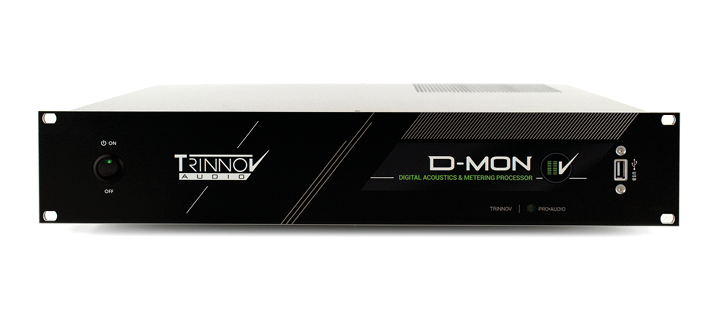 TRINNOV – We’re guessing that most Mix readers aren’t entirely familiar with the name Trinnov. Maybe they’ve heard it a couple of times in the past couple of years, in that “Oh, yeah, a friend mentioned that…” kind of way. We’re also guessing that Mix readers are about to hear a whole lot more. Just last week, Mix contributor Steve La Cerra sent an email asking, “Have you heard of this? It’s called D-MON?” I had heard of it. It’s a processor and monitor controller that until November 2021 was limited to 7.1.4. Now it can go much bigger. Ravenna and AES67. And, most, importantly, Dolby Atmos support. Trinnov is a French company, founded in 2003 based on years of research into 3D audio processing. Labs, research facilities, high-end studios and the hi-fi world know all about Trinnov. Pro audio is about to find out.
TRINNOV – We’re guessing that most Mix readers aren’t entirely familiar with the name Trinnov. Maybe they’ve heard it a couple of times in the past couple of years, in that “Oh, yeah, a friend mentioned that…” kind of way. We’re also guessing that Mix readers are about to hear a whole lot more. Just last week, Mix contributor Steve La Cerra sent an email asking, “Have you heard of this? It’s called D-MON?” I had heard of it. It’s a processor and monitor controller that until November 2021 was limited to 7.1.4. Now it can go much bigger. Ravenna and AES67. And, most, importantly, Dolby Atmos support. Trinnov is a French company, founded in 2003 based on years of research into 3D audio processing. Labs, research facilities, high-end studios and the hi-fi world know all about Trinnov. Pro audio is about to find out.
